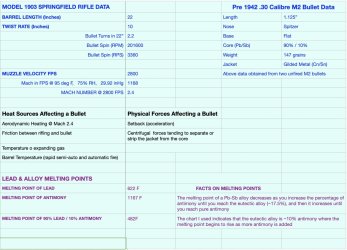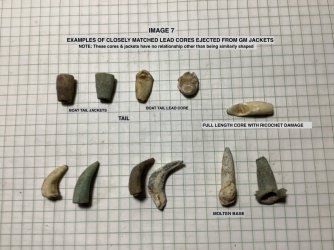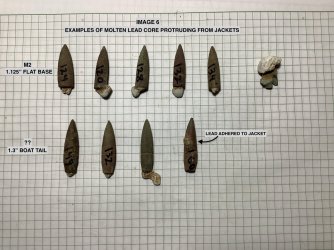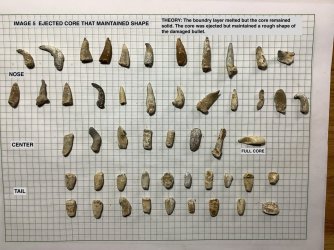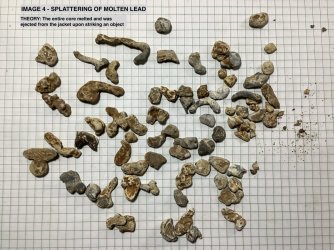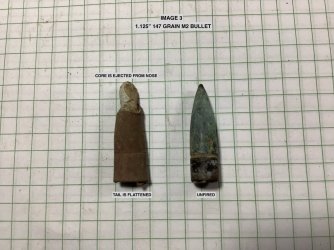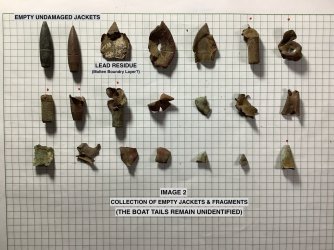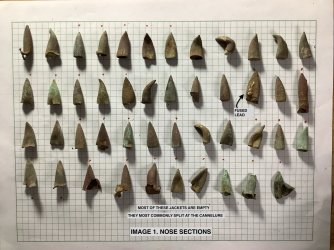Here's some background info followed by photos. I've been recovering WWII battlefield relics for museums since 1979. I'm currently working a battlefield (1942) that was heavily jungled with tall & mature hardwood trees and thick undergrowth. The fighting was very intense with the U.S. using the .30 cal M1903 Springfield, the M1 Garand and M1919 machine gun. In five trips to the site I've recovered nearly 300 bullets that I've segregated by weight, length, core and shape. I'm providing ballistics and design data on just the the .30 cal. M2 bullet due to it's the only one I've so far positively identified.
I've never ran across such a high density of bullets and further, such a high percentage with ricochet damage. This damage ranges from the nose being bent just a few degrees, up to 90 degrees and beyond. Many have multiple strikes causing flattening or odd shapes. A majority of them are damaged yet retained the entire core, some retained partial core and others are empty. I can only theorize that this was caused by varying degrees of throat & barrel temperature due to varying rates of fire between the three weapons and the length of time the cartridge remained in the chamber.
Looking at the photos will raise other questions. Example, note the two perfectly shaped but hollow jackets. Even the period tracer rounds contained a partial lead core.
I ran across this 2021 thread while researching the physics of ricochet and it seems to explain the mystery of the molten and bare lead cor
My comments and theories are within the images. Apologies for any errors in the data. I'm not a ballistics guy and welcome any corrections. I also welcome questions or requests for more images.
 Help Support Long Range Hunting Forum
Help Support Long Range Hunting Forum
